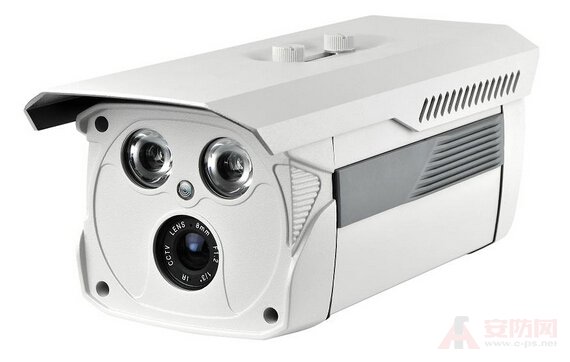The security HD era has arrived. I believe that many people will habitually put their hands in front of the camera lens before they touch a million HD cameras to see the fluency of the picture and the delay is not high. In fact, for the current products, delaying this problem is inevitable, but what can be improved is how to reduce the delay? I believe everyone wants to know the solution to this problem, then let's take a look at it.

Latency is one of the important indicators of HD network cameras.
In order to solve the delay problem of HD network cameras, we must first know how the delay is generated: The following lists several important factors that cause the delay of HD network cameras for everyone to learn and communicate.
First, the high definition network camera (HDNC) video acquisition and encoding output takes time.
2. When the digital signal encoded by HDNC is transmitted through the network, network delay can be generated according to the bandwidth capacity and performance of the network device.
3. After receiving the encoded digital signal, the backend device needs time to decode it.
For comparison, we found several well-known HDNC delay detection reports on the Internet: Hikvision, Sony, An Ruitong, and Onyx. These cameras all use CMOS image sensors, and the sensors are 1.3 megapixels. (Note: The method of delay testing is: running the electronic stopwatch on the monitored computer, and placing the camera directly on the screen of the computer, the stopwatch of the camera monitoring screen The value is compared to the computer's stopwatch value to get the number of milliseconds of delay.)
Hikvision DS-2CD8264FWD-EIS HD network camera delays about 220ms
Sony (SONY) SNC-CH140 HD network camera delays about 330ms
An Ruitong KR-GN720 HD network camera delays about 365ms
Onyx MCC600P HD network camera delays about 300ms
The above four brands, all who do security should know? The megapixel network HD cameras, which are well-known brands, have different delays, but it is undeniable that their delays are relatively small. In addition to these well-known companies, there is another brand that has done a very good job in this respect. The Anding AD-DH130W-F2 HD network camera has a delay of about 230ms. How to reduce the latency of HDNC even close to the delay of well-known brands? We only need to pay attention to the following points:
First, when developing new products, choose a good SOC processor
At present, HDNC's more common processor chips are: TI's DaVinci series, Huawei Hisilicon, Taiwan Zhiyuan, Fuyi Microelectronics and Anba. The most commonly used is the TI DaVinci chip TMS320DM3** series. In general: TI's DM355 uses the MPEG-4 compression format. DM365 and DM368 use the compression format of H.264. If someone says: TIDM355 uses the H.264 compression format, needless to say, it is definitely a lie. The performance of TIDM365 and TIDM368 chips is not the same. For example: HDNC with TIDM365 + 1.3 megapixel SENSOR, frame rate: 25 frames / sec, delay of about 200ms. With the 1.3 megapixel HDNC of the TIDM368 chip, the frame rate can reach 40 frames per second, and the delay is much lower than 200ms.
Second, optimize network transmission
There are currently two ways of network transmission. 1. Transmission via TCP protocol. 2. Transmission via UDP protocol.
The TCP protocol transmission has the following procedures: IP packet transmission, authentication information, and reception. The signal transmitted in this way is complete. There is no packet loss. But the disadvantage is that it increases network latency.
UDP protocol transmission is very simple, IP packet transmission and reception two steps (or called RTSP real-time streaming media transmission). Do not verify the completeness or right of the information. Directly receive decoding. This approach eases network latency very well, but there may be data loss or distortion (which is extremely rare in general). Generally, HDNC provides both TCP and UDP transport protocols to choose from. After the actual test, we believe that the choice of UDP transmission can still meet the monitoring requirements, and effectively reduce the network delay.
Third, choose a good back-end HD-NVR
The role of the back-end HD-NVR is mainly to receive network video signals, storage, HD video decoding, and so on. High-definition video requires high decoding capability for HD-NVR. A good HD-NVR will decode faster, take less time, and have less latency. In general, the decoding of H.264 has software decoding and hardware decoding scheme of embedded decoder. The hardware decoding scheme has higher cost, but does not occupy embedded CPU resources, and has high efficiency, which can effectively reduce decoding time and improve video fluency. It is the first choice for HD network video surveillance engineering.
Taken together, it is impossible to completely eliminate the network delay of HDNC, but if you choose a camera with better overall solution, the network delay can be controlled within an acceptable range.
The main type of Tape Measure is Steel Tape, followed by fiber tape, which is the tape that everyone often sees. Many people say it is a cloth ruler, and there is also a waist measurement ruler (tailor ruler/clothing ruler belong to this category). In southern China and Hong Kong, the tape measure is usually referred to as a soft ruler or a pull ruler. The material is PVC plastic and glass fiber, which can prevent the tape from being stretched during use.
3M Tape Measure,Vintage Tape Measure,Cheap Tape Measure,Durable Steel Measuring Tape
Henan Liangjin Tools Co.,Ltd , https://www.liangjintools.com